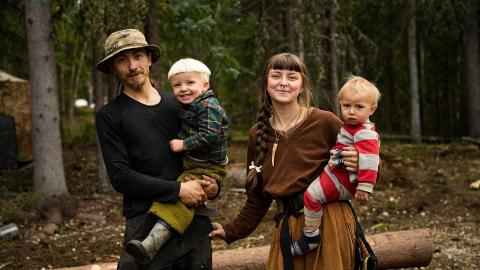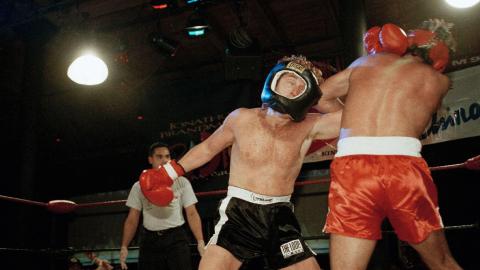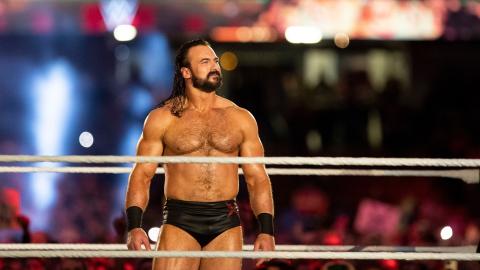1968 Olympics Black Power salute
They raised their fists aloft in defiance against racism with the eyes of the world upon them.
John Carlos realised too late that he had left his black leather gloves behind in the Olympic Village. The Australian athlete, Peter Norman, suggested he borrow the left-handed glove of Carlos’ teammate, Tommie Smith. It would mean he would be saluting with the wrong hand, but he would still be saluting, and that’s all that mattered.
As the national anthem of the United States of America began to play over the loudspeakers, both Smith and Carlos raised their gloved fists aloft. The round of applause that had begun to build around the stadium slowly faded away. By the end of the anthem, jeers of derision could be heard coming from the crowd. Neither Smith nor Carlos cared. They had made their point on one of the biggest stages in the world.
Carlos’ and Smith’s protest at the 1968 Olympic Games in Mexico City came about as a result of their membership of the Olympic Project for Human Rights. Set up in 1967 by Professor Harry Edwards of San Jose State University, the OPHR was set up to protest against racial segregation in the States, as well as in countries such as Rhodesia and South Africa.
Carlos and Smith were track athletes at San Jose, and both were committed to Professor Edwards’ project. Initially, the OPHR called for a boycott by all black American athletes of the ’68 games unless four conditions were met. Firstly, the group demanded the reinstatement of Muhammad Ali’s world heavyweight boxing crown, which had been stripped from the legendary fighter following his refusal to fight in Vietnam. Secondly, they called for a ban on South Africa and Rhodesia competing in the games. Thirdly, they wanted to see more black coaches sent to the games. Lastly, they wanted International Olympic Committee President Avery Brundage to step down from his role.
Brundage was a controversial figure who had risen through the ranks of the IOC after successfully preventing a US boycott of the infamous 1936 Olympics held in Nazi Germany. Viewed by many as a racist, an anti-Semite and a Nazi sympathiser, it was not surprising that the OPHR demanded his head.
The plan was simple: if they were to win medals in the final of the 200 metre race, they would don black gloves at the medal ceremony and give the ‘Black Power’ salute.
As the anthem began playing, both Carlos and Smith bowed their heads and raised their fists aloft. The crowd fell silent. Photographer John Dominis was in the stadium and took a photograph of the three athletes that would become one of the most important and powerful images of the civil rights movement.
The reaction to the protest was swift and damning. The IOC condemned the athletes’ actions as ‘a deliberate and violent breach of the fundamental principles of the Olympic spirit.’ IOC President Avery Brundage condemned the protest, demanding Carlos’ and Smith’s immediate suspension from the US team. When that was refused, Brundage went further and threatened the entire US track team with expulsion. Reluctantly, the US team capitulated, and Carlos and Smith were expelled from the Olympic Village and sent home.
Back in the States, Smith and Carlos received not just criticism, but also death threats. Norman was also vilified when he returned to his native Australia, and many believe he was not picked for the 1972 Olympic Games in Munich as a punishment for his part in the ‘68 protest. Officials disagreed, stating that Norman was not included in the track team because he came third in the Australian Athletics Championships due to a knee injury.
The furore over the salute eventually died down and the athletes involved got on with their lives. Both Smith and Carlos went on to have brief NFL careers before moving on to senior coaching positions. In recognition of not just his protest, but also his sporting achievements, Smith was awarded the California Black Sportsman of the Millennium Award in 1999. Carlos, meanwhile, continues to be active in the US protest movement.
Norman continued to be ostracised, retiring shortly after failing to qualify for the 1972 games. Attitudes in the Australian sporting establishment hadn’t changed twenty-eight years later when Norman was not invited to attend the opening ceremony of the 2000 Sydney games, despite being acknowledged as one of Australia’s finest ever Olympians. “If we were getting beat up, Peter was facing an entire country and suffering alone,” Carlos would later say of his friend’s treatment.
As the years rolled on, attitudes changed, and the 1968 protest came to be acknowledged as an important event in the history of the civil rights struggle in America. Both Carlos and Smith were awarded the Arthur Ashe Courage Award at the 2008 ESPY Awards, and in 2012 Australia finally apologized to Norman, calling his participation in the protest ‘a moment of heroism and humility that advanced international awareness for racial inequality.’
Sadly, the apology came too late. Peter Norman died of a heart attack on the 3rd of October 2006. At his funeral, both Carlos and Smith acted as pallbearers.
It’s been fifty years since Tommie Smith and John Carlos raised their fists to protest against the racial injustices being committed in their country. At the time, they were accused of bringing shame on their nation. Half a century later, they are rightly hailed as heroes.















